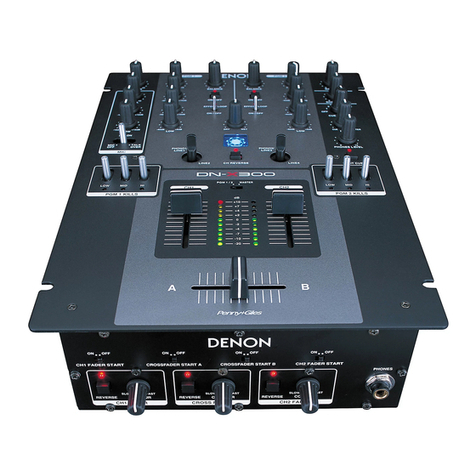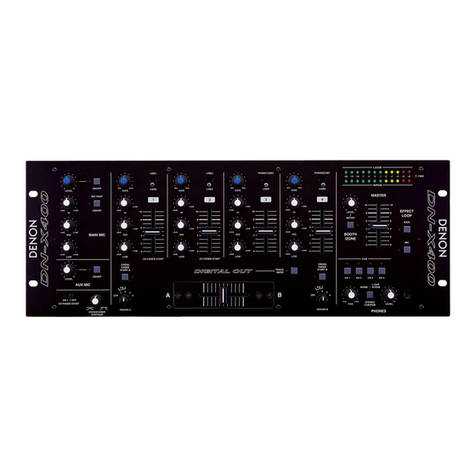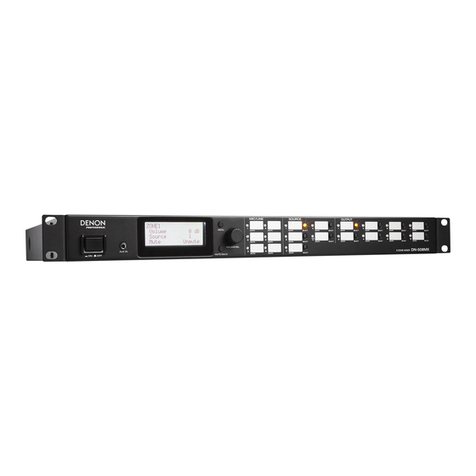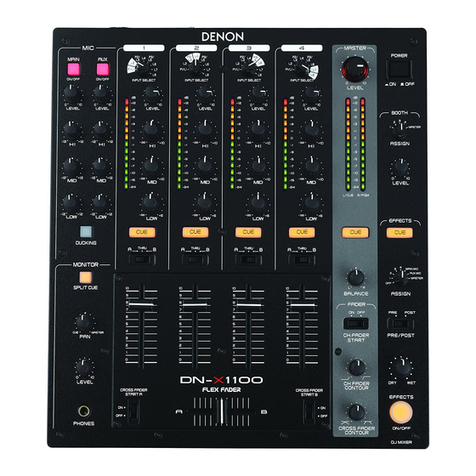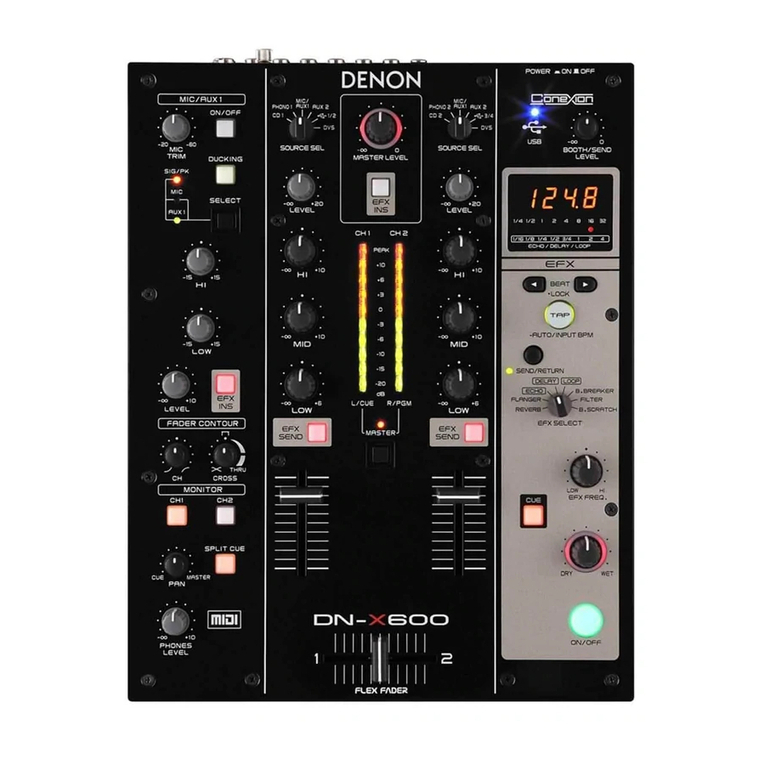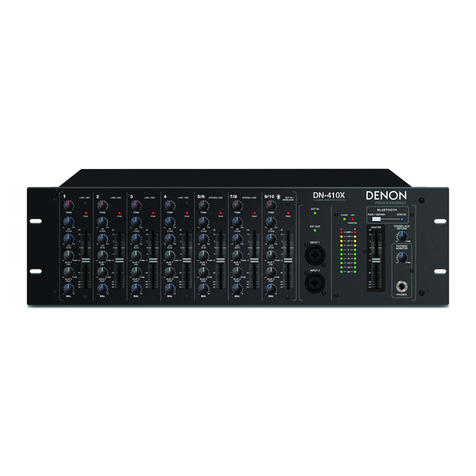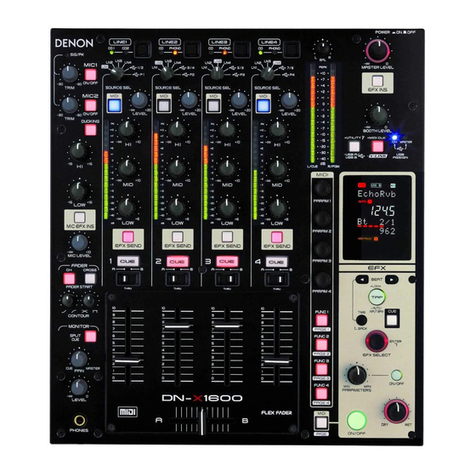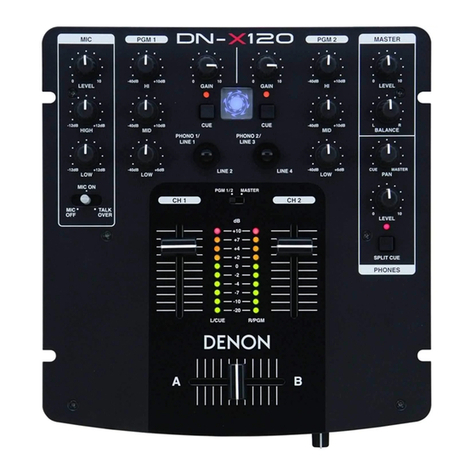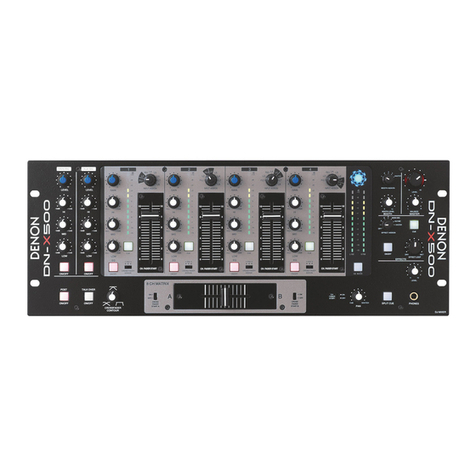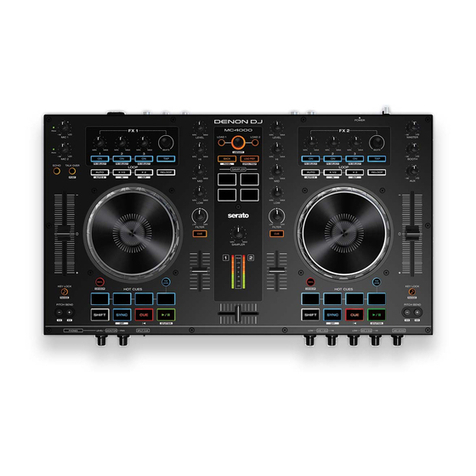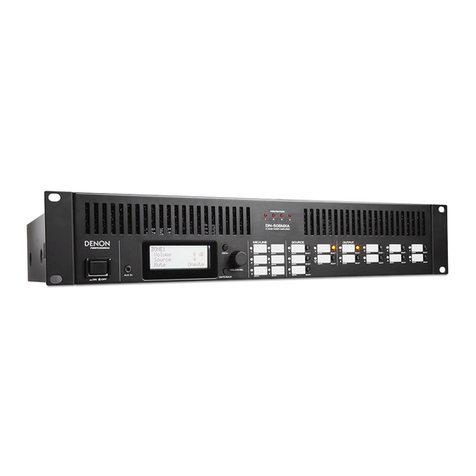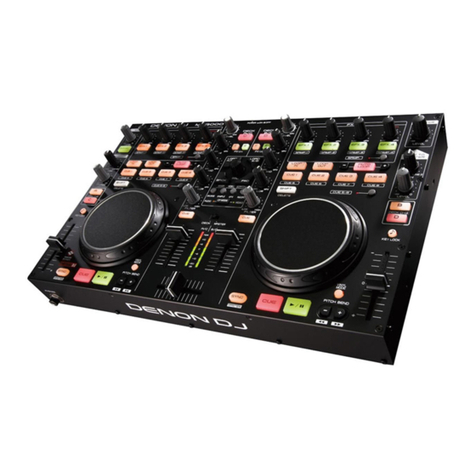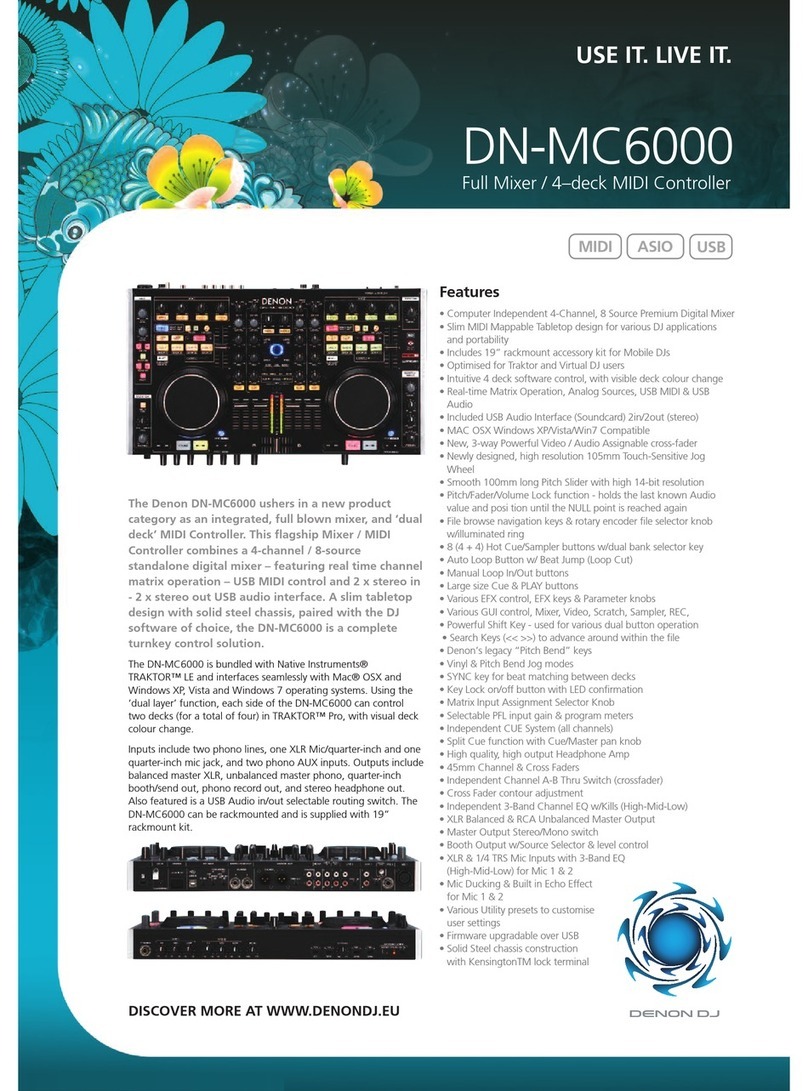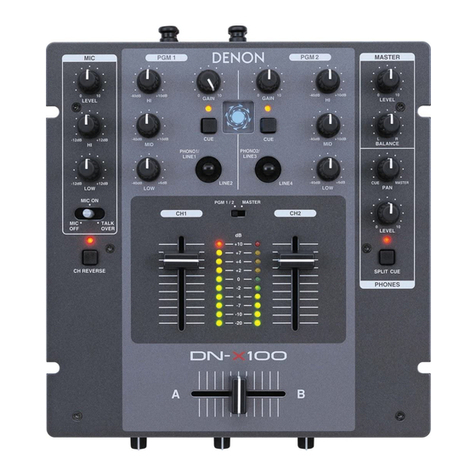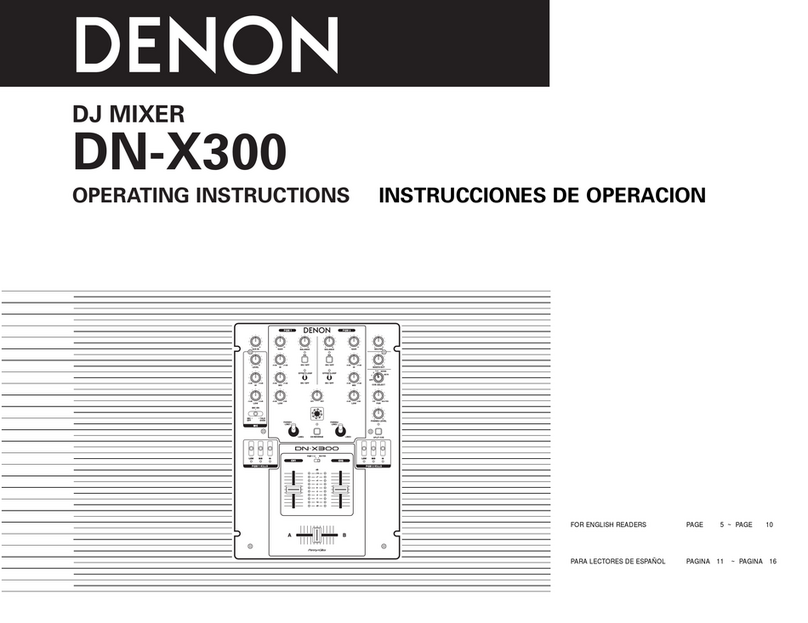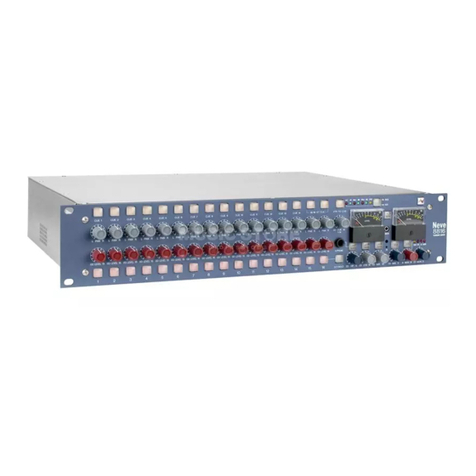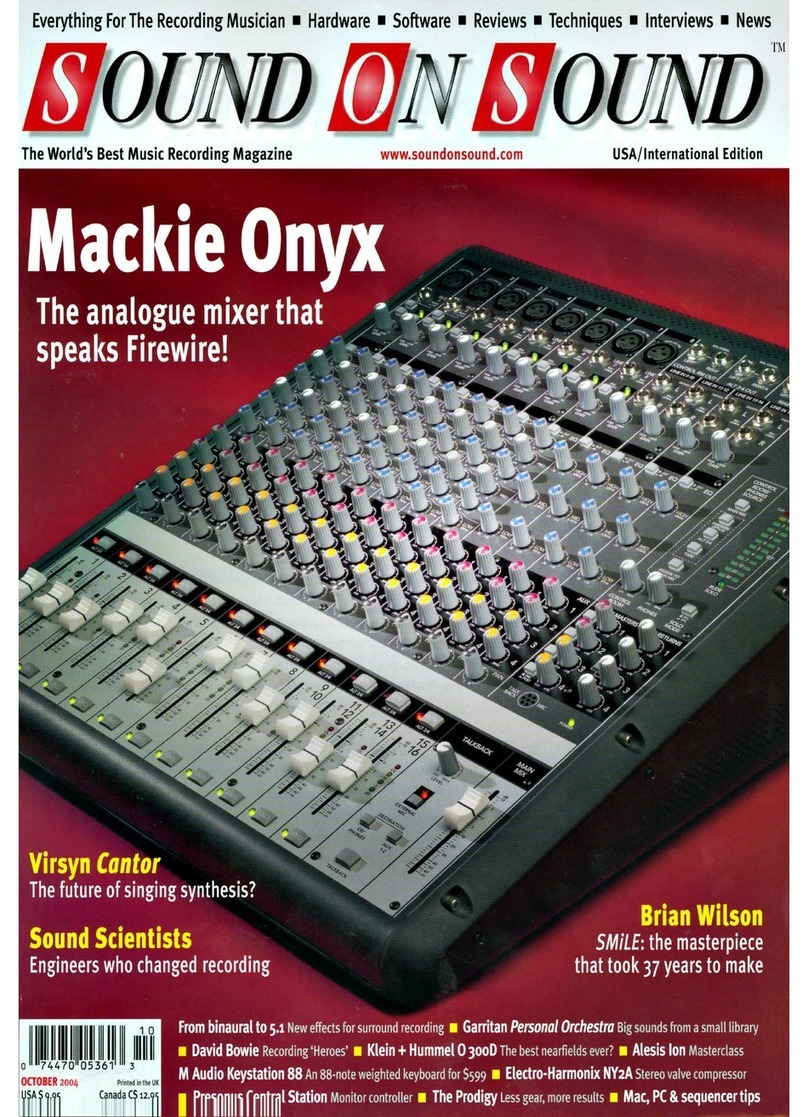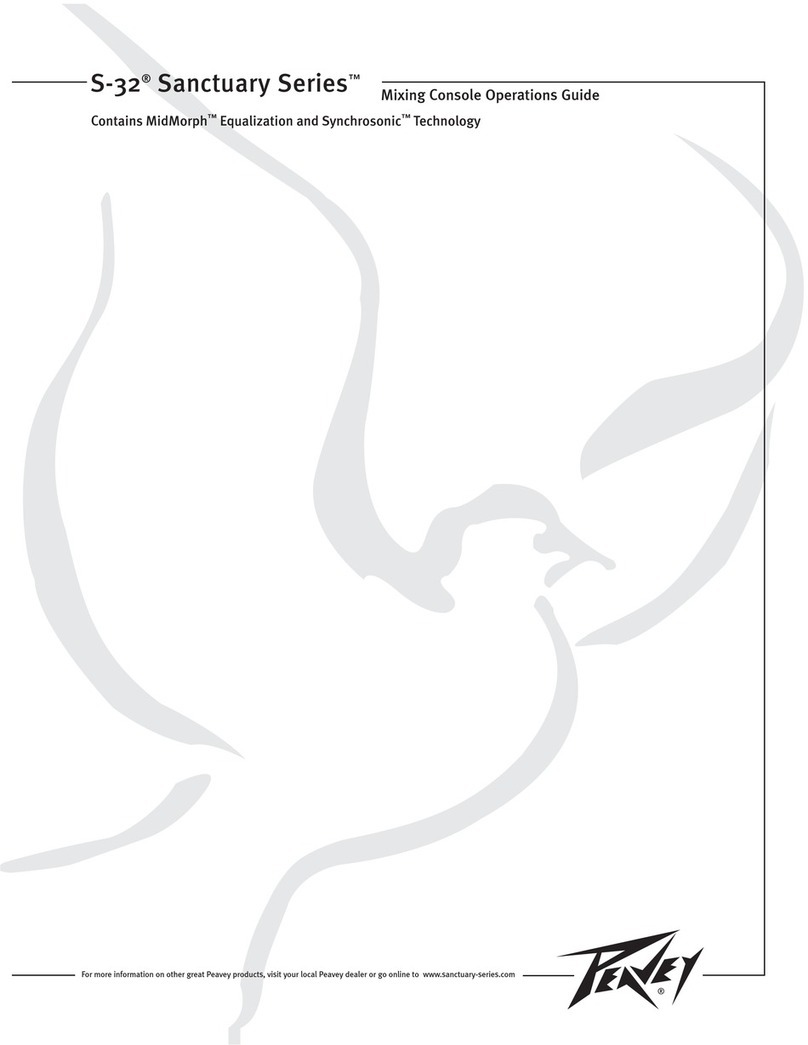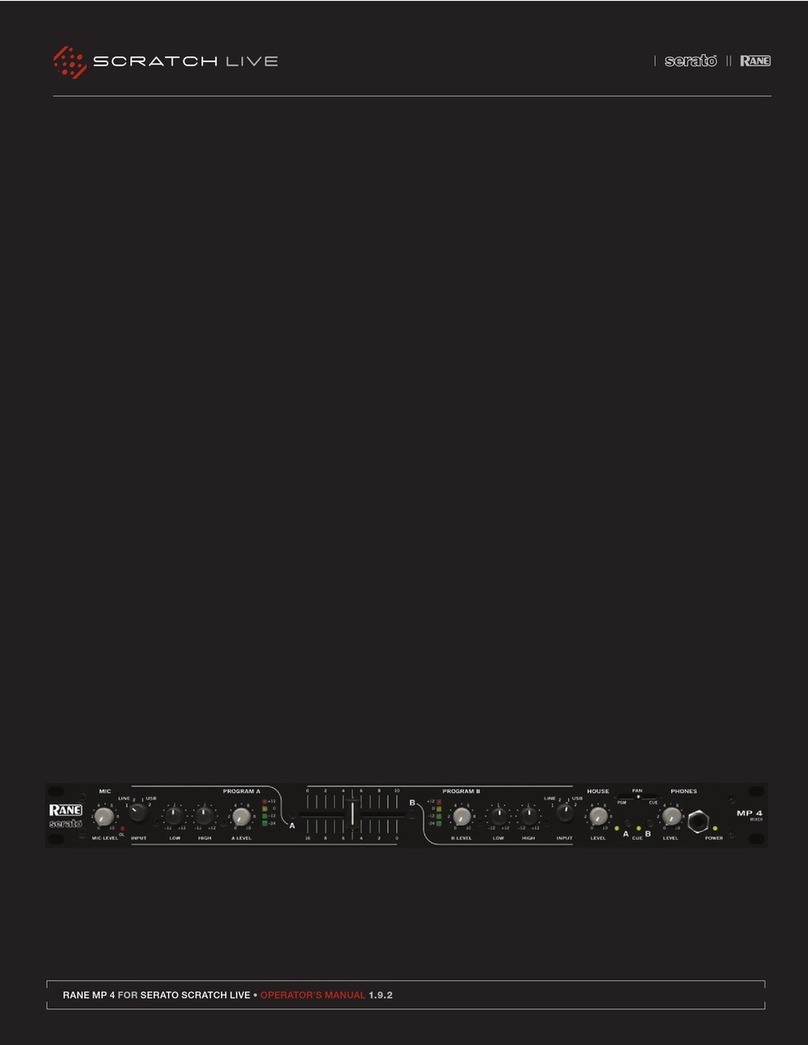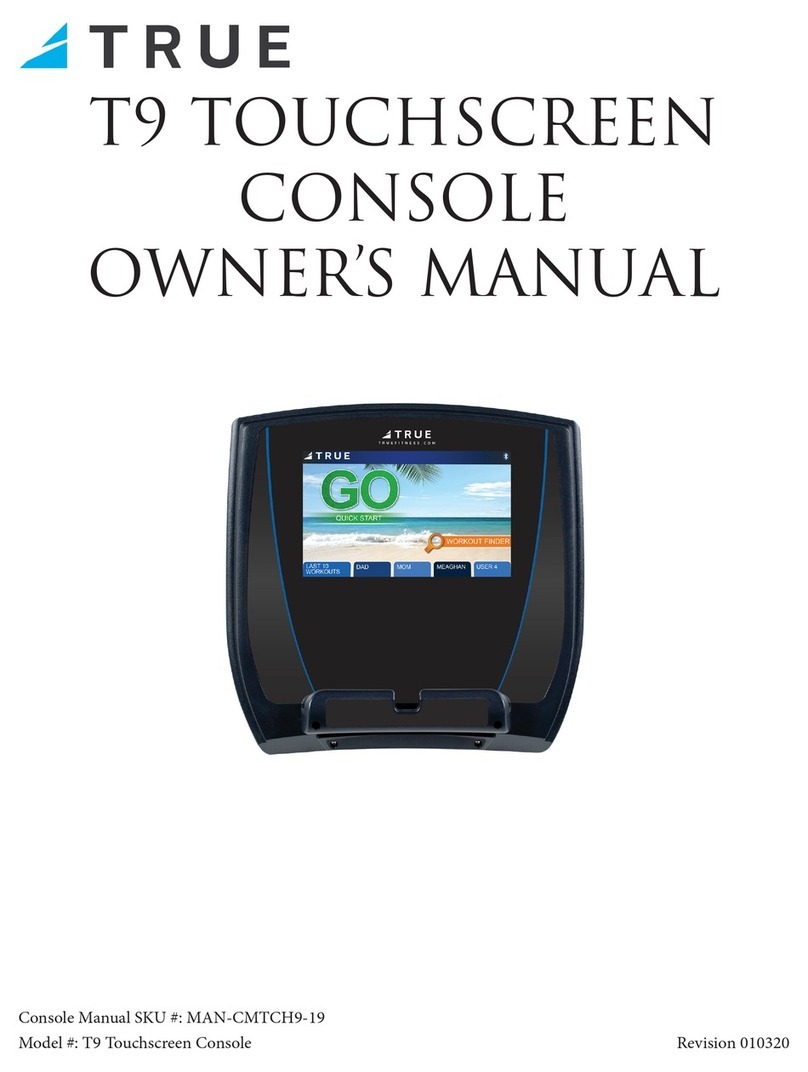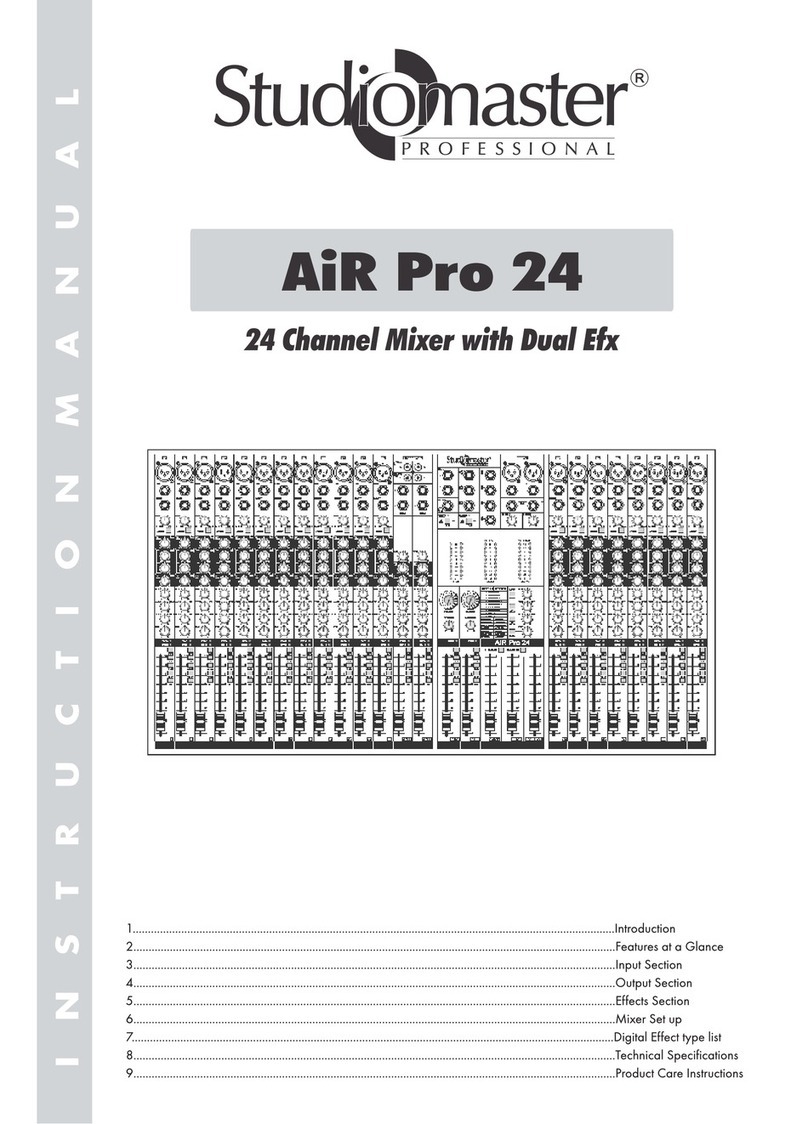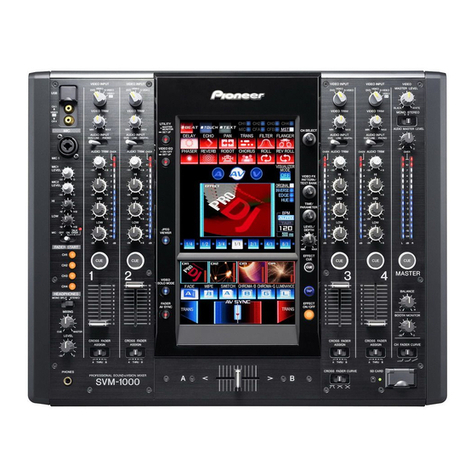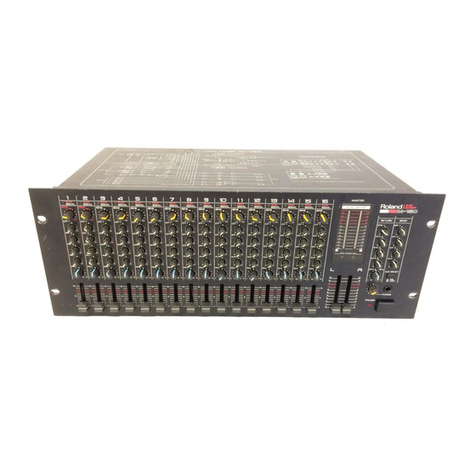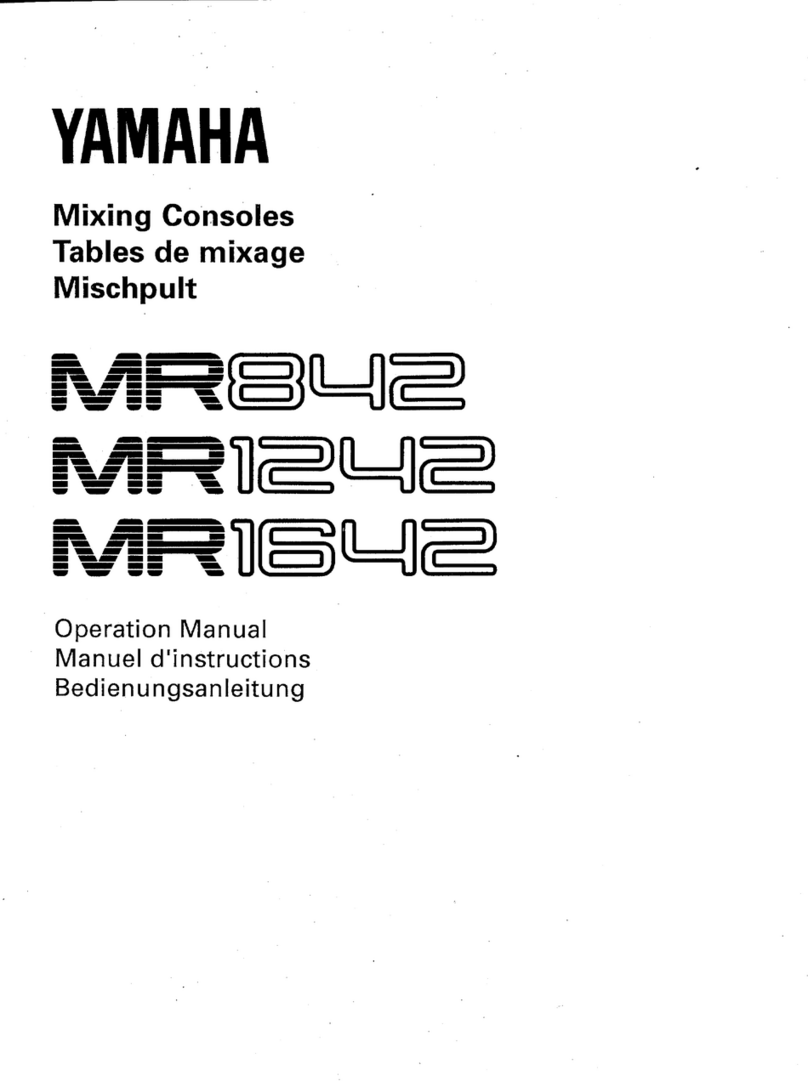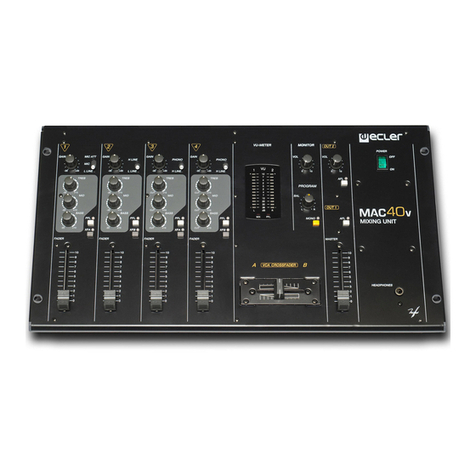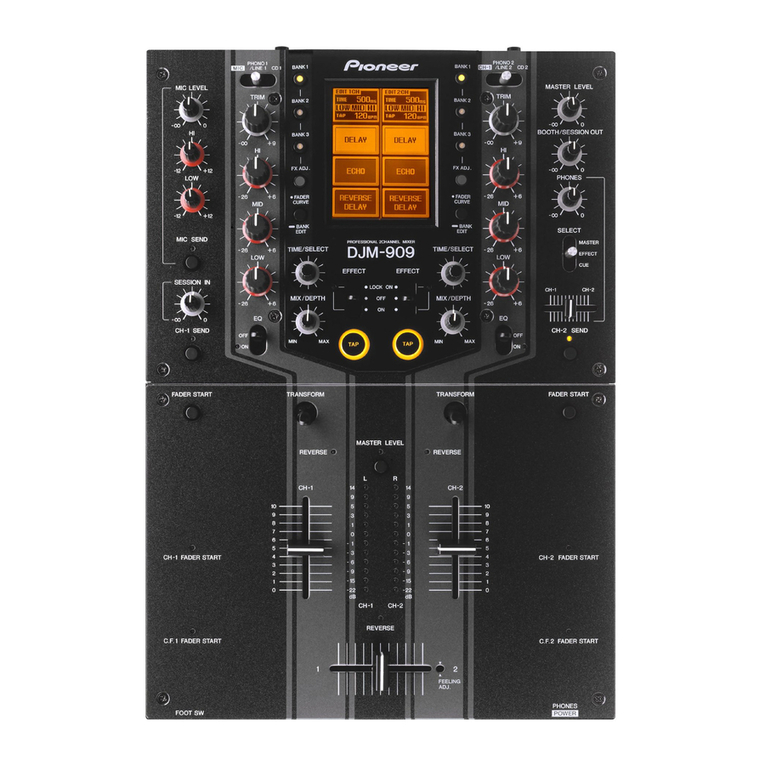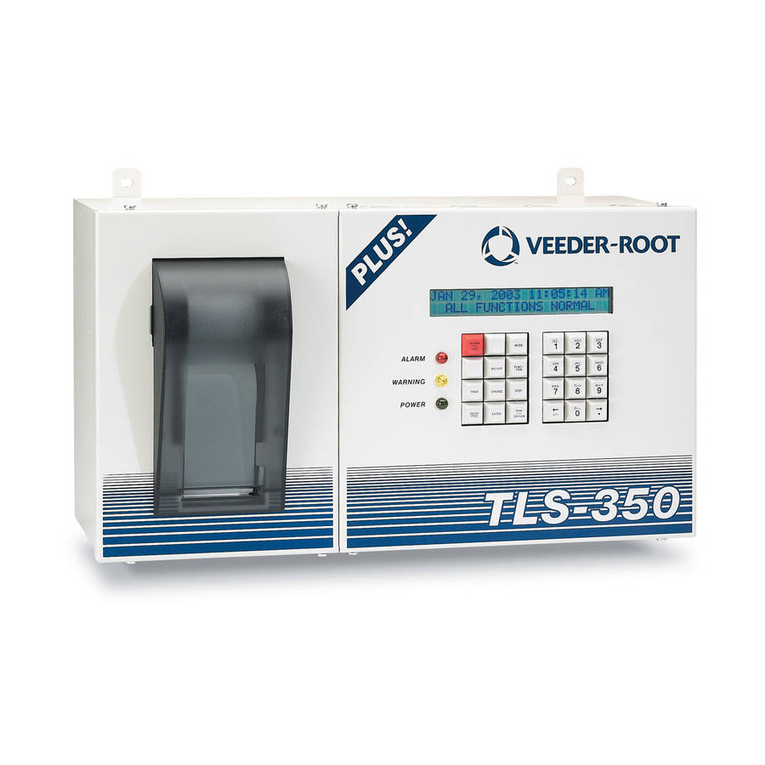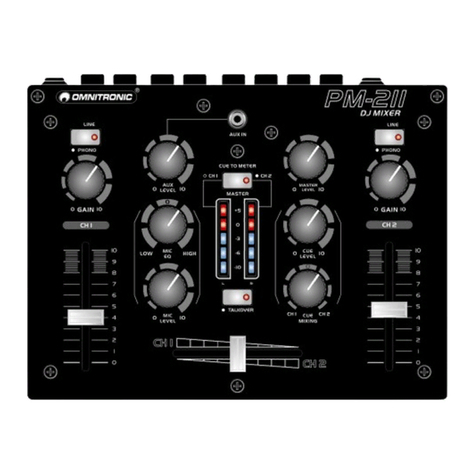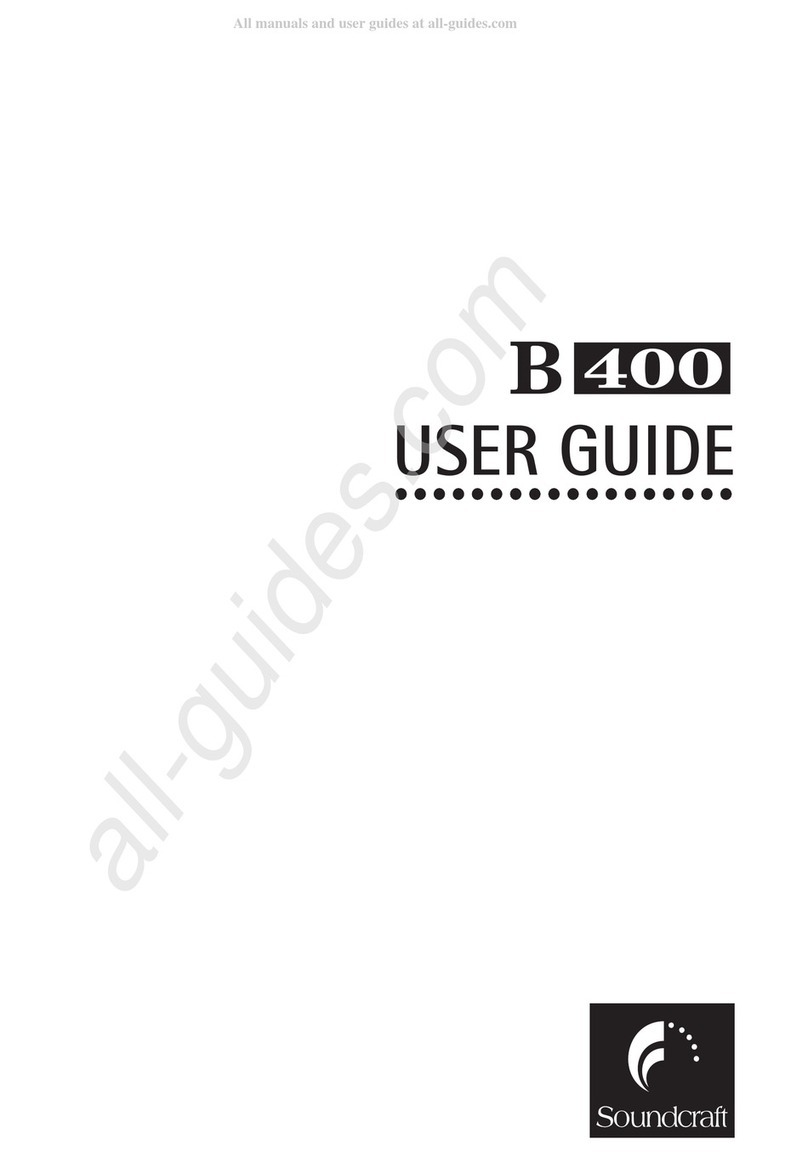4
•DECLARATION OF CONFORMITY
We declare under our sole responsibility that this
product, to which this declaration relates, is in
conformity with the following standards:
EN60065, EN55013, EN55020, EN61000-3-2 and
EN61000-3-3.
Following the provisions of 73/23/EEC,
89/336/EEC and 93/68/EEC Directive.
•ÜBEREINSTIMMUNGSERKLÄRUNG
Wir erklären unter unserer Verantwortung, daß
dieses Produkt, auf das sich diese Erklärung
bezieht, den folgenden Standards entspricht:
EN60065, EN55013, EN55020, EN61000-3-2 und
EN61000-3-3.
Entspricht den Verordnungen der Direktive
73/23/EEC, 89/336/EEC und 93/68/EEC.
•DECLARATION DE CONFORMITE
Nous déclarons sous notre seule responsabilité
que l’appareil, auquel se réfère cette déclaration,
est conforme aux standards suivants:
EN60065, EN55013, EN55020, EN61000-3-2 et
EN61000-3-3.
D’après les dispositions de la Directive
73/23/EEC, 89/336/EEC et 93/68/EEC.
•DICHIARAZIONE DI CONFORMITÀ
Dichiariamo con piena responsabilità che questo
prodotto, al quale la nostra dichiarazione si
riferisce, è conforme alle seguenti normative:
EN60065, EN55013, EN55020, EN61000-3-2 e
EN61000-3-3.
In conformità con le condizioni delle direttive
73/23/EEC, 89/336/EEC e 93/68/EEC.
QUESTO PRODOTTO E’ CONFORME
AL D.M. 28/08/95 N. 548
•DECLARACIÓN DE CONFORMIDAD
Declaramos bajo nuestra exclusiva
responsabilidad que este producto al que hace
referencia esta declaración, está conforme con
los siguientes estándares:
EN60065, EN55013, EN55020, EN61000-3-2 y
EN61000-3-3.
Siguiendo las provisiones de las Directivas
73/23/EEC, 89/336/EEC y 93/68/EEC.
•EENVORMIGHEIDSVERKLARING
Wij verklaren uitsluitend op onze
verantwoordelijkheid dat dit produkt, waarop
deze verklaring betrekking heeft, in
overeenstemming is met de volgende normen:
EN60065, EN55013, EN55020, EN61000-3-2 en
EN61000-3-3.
Volgens de bepalingen van de Richtlijnen
73/23/EEC, 89/336/EEC en 93/68/EEC.
•ÖVERENSSTÄMMELSESINTYG
Härmed intygas helt på eget ansvar att denna
produkt, vilken detta intyg avser, uppfyller
följande standarder:
EN60065, EN55013, EN55020, EN61000-3-2 och
EN61000-3-3.
Enligt stadgarna i direktiv 73/23/EEC, 89/336/EEC
och 93/68/EEC.
NOTE ON USE / HINWEISE ZUM GEBRAUCH /
OBSERVATIONS RELATIVES A L’UTILISATION / NOTE SULL’USO
NOTAS SOBRE EL USO / ALVORENS TE GEBRUIKEN / OBSERVERA
•Avoid high temperatures.
Allow for sufficient heat dispersion when
installed on a rack.
•Vermeiden Sie hohe Temperaturen.
Beachten Sie, daß eine ausreichend
Luftzirkulation gewährleistet wird, wenn das
Gerät auf ein Regal gestellt wird.
•Eviter des températures élevées
Tenir compte d’une dispersion de chaleur
suffisante lors de l’installation sur une
étagère.
•Evitate di esporre l’unità a temperature alte.
Assicuratevi che ci sia un’adeguata
dispersione del calore quando installate
l’unità in un mobile per componenti audio.
•Evite altas temperaturas
Permite la suficiente dispersión del calor
cuando está instalado en la consola.
•Vermijd hoge temperaturen.
Zorg voor een degelijk hitteafvoer indien het
apparaat op een rek wordt geplaatst.
•Undvik höga temperaturer.
Se till att det finns möjlighet till god
värmeavledning vid montering i ett rack.
•Keep the set free from moisture, water, and
dust.
•Halten Sie das Gerät von Feuchtigkeit,
Wasser und Staub fern.
•Protéger l’appareil contre l’humidité, l’eau et
lapoussière.
•Tenete l’unità lontana dall’umidità, dall’acqua
e dalla polvere.
•Mantenga el equipo libre de humedad, agua
y polvo.
•Laat geen vochtigheid, water of stof in het
apparaat binnendringen.
•Utsätt inte apparaten för fukt, vatten och
damm.
•Do not let foreign objects in the set.
•Keine fremden Gegenstände in das Gerät
kommen lassen.
•Ne pas laisser des objets étrangers dans
l’appareil.
•E’ importante che nessun oggetto è inserito
all’interno dell’unità.
•No deje objetos extraños dentro del equipo.
•Laat geen vreemde voorwerpen in dit
apparaat vallen.
•Se till att främmande föremål inte tränger in i
apparaten.
•Do not let insecticides, benzene, and thinner
come in contact with the set.
•Lassen Sie das Gerät nicht mit Insektiziden,
Benzin oder Verdünnungsmitteln in
Berührung kommen.
•Ne pas mettre en contact des insecticides,
du benzène et un diluant avec l’appareil.
•Assicuratevvi che l’unità non venga in
contatto con insetticidi, benzolo o solventi.
•No permita el contacto de insecticidas,
gasolina y diluyentes con el equipo.
•Laat geen insektenverdelgende middelen,
benzine of verfverdunner met dit apparaat in
kontakt komen.
•Se till att inte insektsmedel på spraybruk,
bensen och thinner kommer i kontakt med
apparatens hölje.
•Unplug the power cord when not using the
set for long periods of time.
•Wenn das Gerät eine längere Zeit nicht
verwendet werden soll, trennen Sie das
Netzkabel vom Netzstecker.
•Débrancher le cordon d’alimentation lorsque
l’appareil n’est pas utilisé pendant de
longues périodes.
•Disinnestate il filo di alimentazione quando
avete l’intenzione di non usare il filo di
alimentazione per un lungo periodo di tempo.
•Desconecte el cordón de energía cuando no
utilice el equipo por mucho tiempo.
•Neem altijd het netsnoer uit het stopkontakt
wanneer het apparaat gedurende een lange
periode niet wordt gebruikt.
•Koppla ur nätkabeln om apparaten inte
kommer att användas i lång tid.
•Do not obstruct the ventilation holes.
•Die Belüftungsöffnungen dürfen nicht
verdeckt werden.
•Ne pas obstruer les trous d’aération.
•Non coprite i fori di ventilazione.
•No obstruya los orificios de ventilación.
•De ventilatieopeningen mogen niet worden
beblokkeerd.
•Täpp inte till ventilationsöppningarna.
•Handle the power cord carefully.
Hold the plug when unplugging the cord.
•Gehen Sie vorsichtig mit dem Netzkabel um.
Halten Sie das Kabel am Stecker, wenn Sie
den Stecker herausziehen.
•Manipuler le cordon d’alimentation avec
précaution.
Tenir la prise lors du débranchement du
cordon.
•Manneggiate il filo di alimentazione con cura.
Agite per la spina quando scollegate il cavo
dalla presa.
•Maneje el cordón de energía con cuidado.
Sostenga el enchufe cuando desconecte el
cordón de energía.
•Hanteer het netsnoer voorzichtig.
Houd het snoer bij de stekker vast wanneer
deze moet worden aan- of losgekoppeld.
•Hantera nätkabeln varsamt.
Håll i kabeln när den kopplas från el-uttaget.
•Never disassemble or modify the set in any
way.
•Versuchen Sie niemals das Gerät
auseinander zu nehmen oder auf jegliche Art
zu verändern.
•Ne jamais démonter ou modifier l’appareil
d’une manière ou d’une autre.
•Non smontate mai, nè modificate l’unità in
nessun modo.
•Nunca desarme o modifique el equipo de
ninguna manera.
•Nooit dit apparaat demonteren of op andere
wijze modifiëren.
•Ta inte isär apparaten och försök inte bygga
om den.
✽(For sets with ventilation holes)
ACHTUNG:
•Die Belüftung sollte auf keinen Fall durch das Abdecken
der Belüftungsöffnungen durch Gegenstände wie
beispielsweise Zeitungen, Tischtücher, Vorhänge o. Ä.
behindert werden.
•Auf dem Gerät sollten keinerlei direkten Feuerquellen
wie beispielsweise angezündete Kerzen aufgestellt
werden.
•Bitte beachten Sie bei der Entsorgung der Batterien die
geltenden Umweltbestimmungen.
•Das Gerät sollte keinerlei Flüssigkeit, also keinem
Tropfen oder Spritzen ausgesetzt werden.
•Auf dem Gerät sollten keinerlei mit Flüssigkeit gefüllten
Behälter wie beispielsweise Vasen aufgestellt werden.
ATTENTION:
•La ventilation ne doit pas être gênée en recouvrant les
ouvertures de la ventilation avec des objets tels que
journaux, rideaux, tissus, etc.
•Aucune flamme nue, par exemple une bougie, ne doit
être placée sur l’appareil.
•Veillez à respecter l’environnement lorsque vous jetez
les piles usagées.
•L’appareil ne doit pas être exposé à l’eau ou à
l’humidité.
•Aucun objet contenant du liquide, par exemple un vase,
ne doit être placé sur l’appareil.
PRECAUZIONI:
•Le aperture di ventilazione non devono essere ostruite
coprendole con oggetti, quali giornali, tovaglie, tende e
così via.
•Non posizionare sull'apparecchiatura fiamme libere,
come ad esempio le candele accese.
•Prestare attenzione agli aspetti legati alla tutela
dell’ambiente quando si smaltisce la batteria.
•L’apparecchiatura non deve essere esposta a gocciolii o
spruzzi.
•Non posizionare sull’apparecchiatura nessun oggetto
contenete liquidi, come ad esempio i vasi.
PRECAUCIÓN:
•La ventilación no debe quedar obstruida por hacerse
cubierto las aperturas con objetos como periódicos,
manteles, cortinas, etc.
•No debe colocarse sobre el aparato ninguna fuente
inflamable sin protección, como velas encendidas.
•Ala hora de deshacerse de las pilas, respete la
normativa para el cuidado del medio ambiente.
•No se expondrá el aparato al goteo o salpicaduras
cuando se utilice.
•No se colocarán sobre el aparato objetos llenos de
líquido, como jarros.
WAARSCHUWING:
•De ventilatie mag niet worden belemmerd door de
ventilatieopeningen af te dekken met bijvoorbeeld
kranten, een tafelkleed, gordijnen, enz.
•Plaats geen open vlammen, bijvoorbeeld een brandende
kaars, op het apparaat.
•Houd u steeds aan de milieuvoorschriften wanneer u
gebruikte batterijen wegdoet.
•Stel het apparaat niet bloot aan druppels of spatten.
•Plaats geen voorwerpen gevuld met water, bijvoorbeeld
een vaas, op het apparaat.
OBSERVERA:
•Ventilationen bör inte förhindras genom att täcka för
ventilationsöppningarna med föremål såsom tidningar,
bordsdukar, gardiner osv.
•Inga blottade brandkällor, såsom tända ljus, bör placeras
på apparaten.
•Tänk på miljöaspekterna när du bortskaffar batteri.
•Apparaten får inte utsättas för vätska.
•Inga objekt med vätskor, såsom vaser, får placeras på
apparaten.
CAUTION:
•The ventilation should not be impeded by covering the
ventilation openings with items, such as newspapers,
tablecloths, curtains, etc.
•No naked flame sources, such as lighted candles,
should be placed on the apparatus.
•Attention should be drawn to the environmental
aspects of battery disposal.
•Do not expose the set to dripping or splashing fluids.
•No objects filled with liquids, such as vases, shall be
placed on the apparatus.
